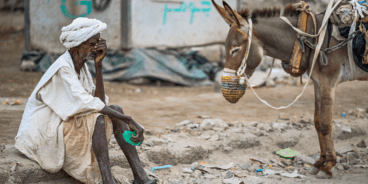
A Strong and Principled Basis for Response
The following article written by Prof. the Hon. Gareth Evans was originally published in The Globe and Mail.
There are many good arguments against the over-exuberant use of coercive military force for human protection purposes. “Humanitarian intervention” was a wonderful rallying cry in the global North in response to the terrible sequence of mass atrocity crimes that unfolded during the 1990s in Rwanda, Bosnia and Kosovo. But it utterly failed to produce global consensus on when, where and how it would be right to intervene militarily.
One reason for the lack of consensus was insensitivity by many proponents of humanitarian intervention to the concerns of the global South. For many developing countries – proud of their new independence, conscious of their fragility and mindful of the destructive role of missions civilisatrices by imperial powers in the past – to concede any limitation on sovereignty was to concede everything. A second reason, closely related, was the failure of supporters of military force to spell out, in precise detail, criteria for its use. A third reason was the acute discomfort of humanitarian relief organizations with the whole idea that the use of force could itself be “humanitarian.” But to forswear the use of force entirely in the face of mass-atrocity crimes – genocide, ethnic cleansing and other major crimes against humanity – is to throw the baby out with the bathwater.
Does anybody now believe it was right not to deploy the 5,000 troops who could have saved 800,000 lives in Rwanda? Or for United Nations troops to allow 8,000 Muslim men and boys to be taken to their deaths from the Srebrenica “safe area”? Wasn’t the North Atlantic Treaty Organization’s defence of Kosovo against Slobodan Milosevic in 1999 at least morally legitimate, even if not defensible legally in the absence of Security Council approval? Would the fire there – or in Rwanda – really have burned itself out without huge further loss of life?
What was needed was an answer to the problem of humanitarian intervention that took what needed to be preserved from the doctrine, but reshaped it in a way capable of producing real North-South consensus. That finally came with the concept of “the responsibility to protect” (R2P), introduced by a Canadian-sponsored international commission in 2001, and adopted unanimously by the United Nations General Assembly at the 2005 World Summit.
The new doctrine turned old ideas upside-down. It wasn’t a matter of the “right” of the big players to throw their weight around, but the “responsibility” of everyone to protect those at risk of mass-atrocity crimes. And the key response now was not “intervention” but “protection” – the emphasis was to be on prevention and assistance, rather than intrusion and coercion. If prevention failed and reaction was necessary, military force was not excluded, but it was the last thing to be considered. State sovereignty was still the starting point, but under the UN system, sovereignty was not and could not be absolute: If a state manifestly failed to protect its people, through incapacity or ill will, then it was legitimate for other states to take appropriate action.
The R2P doctrine, as articulated in the reports leading up to the 2005 Summit (but not yet by the UN itself), spells out detailed criteria for the use of military force: The harm to individuals has to be serious, and currently occurring or immediately apprehended; the primary purpose has to be stopping that harm, not securing oil supplies or anything else; force has to be a last resort, with lesser measures clearly bound to fail; it has to be proportional to the harm; and its application has to do more overall good than harm.
Properly understood and applied, R2P does meet all the familiar criticisms – some of them, again, well made – hurled against the “humanitarian intervention” doctrine it replaced. The situation in Kenya early this year was a perfect example of its application – with diplomacy, rather than force, being applied in the face of explosive ethnic violence. Since 1994, Burundi has been a clear example of R2P principles being applied to prevent such violence.
By contrast, Russia’s invasion of Georgia in August, like the invasion of Iraq in 2003, were simply not R2P cases. In any objective view, the criteria for the use of force were not remotely satisfied. The Myanmar cyclone case could only have begun to be an R2P case if the regime’s foot-dragging had itself amounted to a crime against humanity; the jury was still out on that when relief was finally allowed.
Nobody pretends that the new R2P norm is yet universally understood, that it has yet won universal acceptance, or that it is yet fully operationally effective, as the unhappy case of Darfur continues to show. But it is a strong and principled basis for a properly graduated response by the international community to man-made human-rights disasters in countries that have failed to act as sovereign states should. Maybe the indifference and cynicism that have greeted mass-atrocity crimes for centuries are at last becoming a thing of the past.
Related Content


11th Meeting of the Global Network of R2P Focal Points Outcome Document
